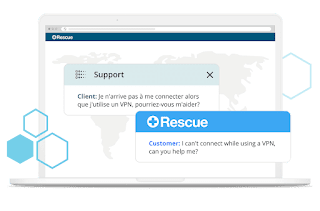Elevate Your Remote Live Chat Support: A Comprehensive Training Guide
In today's digital landscape, live chat support is no longer a luxury; it's a necessity. To truly thrive, businesses need to equip their remote support teams with the skills and knowledge to deliver exceptional customer experiences. This article provides a detailed training roadmap to help you cultivate a high-performing remote live chat team capable of handling any situation with grace and efficiency. We'll explore essential training modules, practical strategies, and key performance indicators to ensure your team delivers consistent, top-tier support.
Mastering the Fundamentals: Setting the Stage for Success
Before diving into advanced techniques, lay a strong foundation by equipping your team with fundamental knowledge. This initial training should cover the basics of your live chat platform, emphasizing ease of navigation and efficient use of features. Effective training should be interactive and engaging, not just a dry recitation of facts. Consider using screen recordings, interactive tutorials, and even role-playing scenarios to bring the training to life. This hands-on approach ensures that every team member understands the platform's functionalities before tackling more complex aspects of customer interaction.
Understanding Your Live Chat Platform
Begin by providing in-depth instruction on your chosen live chat software. This includes: navigating the interface, managing multiple chats concurrently, utilizing canned responses effectively, and understanding the reporting features. Demonstrate best practices for transferring chats to supervisors when necessary, and emphasize the importance of maintaining a professional and consistent tone in all communications. Practice sessions, followed by feedback and refinement, are crucial for building confidence and proficiency.
Crafting Compelling Customer Interactions
Effective communication is paramount. Train your team on active listening techniques, emphasizing the importance of fully understanding customer needs before offering solutions. This goes beyond simply reading the chat; it involves analyzing the customer’s tone, identifying underlying issues, and responding with empathy and understanding. Encourage your team to use clear, concise language and avoid jargon. They should also be prepared to ask clarifying questions to ensure they’re addressing the correct issue.
Advanced Techniques: Elevating the Customer Experience
Once the fundamentals are mastered, focus on advanced skills that differentiate your support team from the rest. This involves training on handling difficult customers, escalating complex issues effectively, and maintaining a consistently positive brand image. Continuous improvement should be a core tenet of your training program, encouraging ongoing learning and development within the team.
Handling Difficult Customers with Grace
Difficult customers are inevitable. Equip your team with strategies for de-escalating tense situations. This includes: remaining calm and professional, actively listening to concerns without interruption, acknowledging their frustrations, and offering sincere apologies when appropriate. Role-playing difficult customer scenarios is an invaluable training tool. This allows your team to practice their de-escalation techniques in a safe environment before facing real-world challenges.
Escalation and Collaboration: When to Seek Assistance
Train your team to identify situations that require escalation. This might involve complex technical issues, complaints that require management intervention, or situations where the agent is unable to resolve the problem independently. Establish clear protocols for escalating issues, including the appropriate channels for communication and the information needed to ensure a seamless transition. Develop a collaborative environment where team members feel empowered to seek assistance when needed, without fear of judgment or repercussions.
Measuring Success: Key Performance Indicators (KPIs)
Track key metrics to measure your team's performance and identify areas for improvement. This is not just about numbers; it’s about using data to understand and enhance the customer experience. Regularly review these KPIs with your team, providing constructive feedback and celebrating successes. Examples of relevant KPIs include:
- Average Resolution Time
- Customer Satisfaction (CSAT) scores
- First Contact Resolution (FCR) rate
- Average handling time per chat
- Number of escalated chats
By implementing this comprehensive training program and consistently monitoring key performance indicators, you can build a high-performing remote live chat support team that delivers exceptional customer experiences and drives business growth. Remember, continuous improvement is keyâ€"regularly update your training materials and adapt your strategies based on performance data and evolving customer needs.










No comments:
Post a Comment
Note: Only a member of this blog may post a comment.